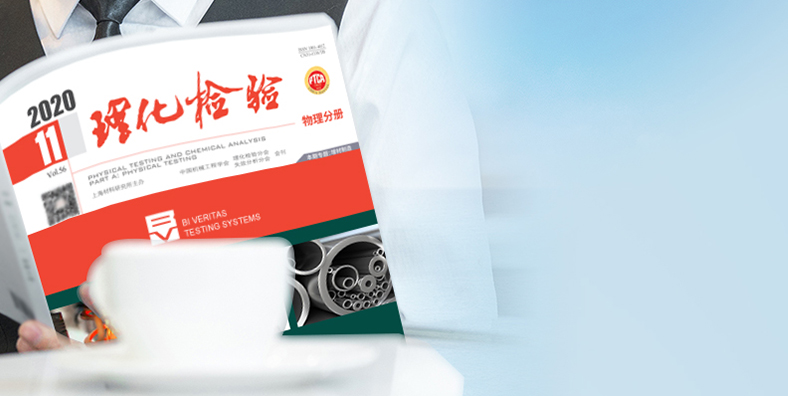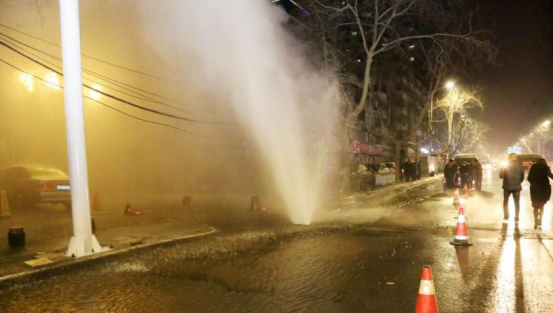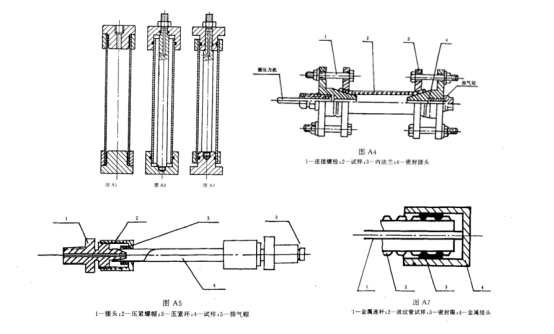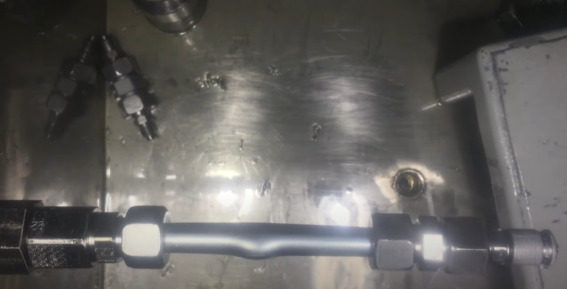
 02-26-2021 |
02-26-2021 |  Hits:1076
Hits:1076

As a common fluid pipeline material in life, plastic pipe is widely used in construction, municipal, industrial and agricultural fields, such as building water supply and drainage, urban and rural water supply and drainage, agricultural irrigation and so on. At present, the common plastic pipes for fluid transportation in the market are mainly divided into thermoplastic pipes and thermosetting plastic pipes. Among them, the plastics with the characteristics of heating softening and cooling hardening are thermoplastic, and the pipes made by extrusion in the pipe making machine by the "plastic" method are thermoplastic pipes. The thermoplastic pipes include PVC pipes, polyethylene pipes, polypropylene pipes, polymethylaldehyde pipes, etc.; the thermosetting plastics refer to the pipes that can be cured or have insoluble (fusible) properties under heating or other conditions )In order to increase the strength of plastics, thermosetting reinforced plastics is to add fiber and other fillers, which can not only improve the strength and heat resistance of plastics, but also reduce the cost. Thermosetting reinforced plastic pipe is a kind of pipe products processed by thermoplastic, such as glass pipe, etc.
As one of the main pipes for fluid transportation in the new construction, reconstruction and expansion projects, the instantaneous explosion and pressure test of plastic pipes are also very important for the detection, inspection and development of research products of factories, product quality inspection units and scientific research institutions 15560 "liquid conveying thermoplastic pipe hydraulic instantaneous burst and pressure test method" to introduce the specific test method.
1、 Test scope
This method is suitable for hydraulic instantaneous burst and pressure test of various types of thermoplastic pipes and thermosetting reinforced plastic pipes for fluid transportation.
2、 Test principle
The test method can be divided into two types: instantaneous burst test and pressure test
The instantaneous burst test is to apply liquid pressure to a given section of plastic pipe sample quickly and continuously, so that the sample can break in a short time, read the pressure value when the sample breaks, and calculate its circumferential stress.
Pressure test is to observe whether the sample is damaged by a given period of plastic pipe sample under the specified constant internal pressure within a given time. The test pressure value and test time are determined by the product standard of the pipe.
3、 Sample preparation
1. The surface of the test sample shall be free from visible cracks, scratches and other defects affecting the test results. Both ends of the sample shall be flat and perpendicular to the axis of the pipe.
2. Sample length: unless otherwise specified in the product standard, the effective length L of the sample between the two sealed joints shall comply with the following table.
|
Nominal outer diameter D < 160mm L = 5D, but not less than 300mm Nominal outer diameter D ≥ 160mm L = 3D, but not less than 760 mm |
3. Number of samples: under the same test conditions, the number of samples shall not be less than 5, or the number of samples shall be determined according to the product standard.
4、 Test device
1. Pipe hydrostatic testing machine
According to the national standard, the pipe and pressure vessel samples within the pressure range of 20MPa are tested for pressure and instantaneous burst pressure. The pipe hydrostatic testing machine is composed of the main machine and the water tank. The control system is composed of the upper and lower levels of computer and PLC. The upper computer mainly completes the graph processing, data processing and data management, and the lower computer according to the instructions of the upper computer according to the pressure rate Control the pressure system to achieve the target pressure. The test process is controlled by microcomputer, the pressure value, test time and test status are displayed in real time, and the data is processed and analyzed by microcomputer. The test results can be saved automatically, and the report can be exported and printed.
2. Sealing joint
The sealing joint is installed at both ends of the sample, and the reasonable design of the joint is to make it sealed with the sample and the pressure device. The joint installed on the specimen shall not make the specimen bear axial force. It shall not cause damage to the specimen.

5、 Test conditions and pretreatment
1. The test temperature shall be in accordance with the test conditions specified in the product standard.
2. Liquid pressure must be applied inside the specimen. For example, water. If other liquids are used, it must be ensured that the liquid will not corrode the sample.
3. The external environment of the sample can be liquid or gas. The temperature requirement of the external environment is the same as that of the liquid in the sample.
4. The specimen shall be pretreated before pressure is applied. The pretreatment temperature is the same as the test temperature. The pretreatment time should make the sample reach the test temperature. For the test at 23 ℃, when the sample is immersed in liquid, the pretreatment time shall not be less than 1 h. When the sample is placed in the gas medium, the pretreatment time shall not be less than 16 h.
6、 Experimental steps

1. Install the sealing joint on the sample, fill each sample with the liquid at the test temperature, remove the air from the sample, and then carry out the pretreatment according to Clause 4 of the test conditions and pretreatment section.
2. Connect the specimen to the pressure device and support the specimen to prevent bending and deflection of the specimen due to the weight of the pipe and joint (the support shall not make the specimen subject to longitudinal and radial binding force).
3. Apply test pressure to the specimen
4. In the instantaneous burst test, the pressure is applied to the sample continuously, evenly and rapidly, and the timing is started at the same time until the sample is broken. If the specimen breaks in less than 60 s, reduce the pressing speed and repeat the test until the specimen breaks in 60-70 s. Record the pressure and time when the sample breaks and the fracture state of the sample.
5. During the pressure test, continuously and evenly apply the sample pressure to the given value, and then start timing. During the whole test, keep the pressure constant, and record the test results and sample fracture state after reaching the specified time.
6. When the failure occurs within a diameter and length from the joint, if there is reason to confirm that the failure is caused by some defect in the sample itself, the sample is valid. Otherwise, take another sample for retest.
7、 Calculation of test results
1. If it is necessary to calculate the circumferential stress of pipes, it shall be calculated according to the following formula:
δ=P(D-t)/2t
Where: δ - circumferential stress, unit: MPa;
P -- test pressure, unit: MPa;
D -- average outer diameter, unit: mm (for thermosetting reinforced pipe, outer diameter does not include non reinforced layer);
T -- minimum wall thickness, unit: mm (for thermosetting reinforced pipe, the minimum wall thickness of reinforced layer shall be adopted).
2. When the test pressure is given by the value of circumferential stress δ, the test pressure P is calculated according to the above formula unless otherwise specified.